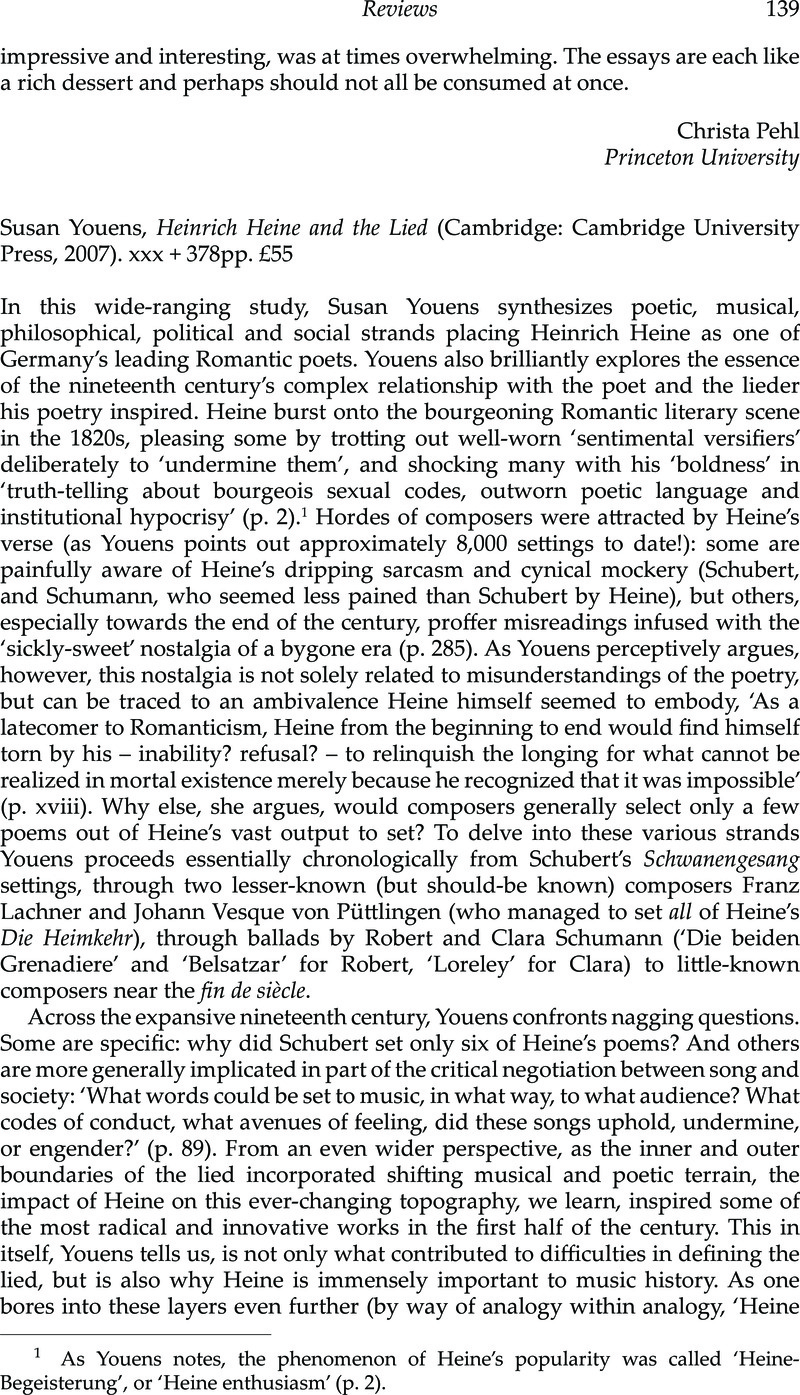No CrossRef data available.
Published online by Cambridge University Press: 13 April 2011

1 As Youens notes, the phenomenon of Heine's popularity was called ‘Heine- Begeisterung’, or ‘Heine enthusiasm’ (p. 2).
2 These descriptive terms were first used by Gorra, Michael, The Bells in their Silence: Travels through Germany (Princeton, NJ: Princeton University Press, 2004): 125Google Scholar.
3 Here Youens notes that ‘thick musicology’ refers to ‘the kind of scholarship that locates musical works in the midst of activity on all fronts, literary, political, personal, religious, philosophical, national, sociological and more’ (p. xxiv).
4 For more concerning this debate see Chusid, Martin, ‘The Sequence of Heine Songs and Cyclicism in Schwanengesang’, in A Companion to Schubert's Schwanengesang: History, Poets, Analysis, Performance, ed. Chusid, Martin (New Haven: Yale University Press, 2000): 159–73.Google Scholar Those for Heine's ordering (minus the intervening poems) in Die Heimkehr include: Goldschmidt, Harry, ‘Welches war die ursprüngliche Reihenfolge in Schuberts Heine-Liedern’, in Deutsches Jahrbuch der Musikwissenschaft für 1972, Jahrg. 17, ed. Eller, Rudolf (Leipzig: Edition Peters, 1974): 52–62; andGoogle ScholarKramer, Richard, Distant Cycles: Schubert and the Conceiving of Song (Chicago and London: University of Chicago Press, 1994): 121–47.Google Scholar For opposing views, see: Fischer, Kurt von, ‘Some Thoughts on Key Order in Schubert's Song Cycles’, in Kurt von Fischer: Essays in Musicology, trans. Skoggard, Carl, ed. Evans, Tamara S. (New York: City University of New York, 1989): 122–32;Google ScholarLitterick, Louise, ‘Recycling Schubert: On Reading Richard Kramer's Distant Cycles: Schubert and the Conceiving of Song’, 19th-Century Music 20/1 (1996): 77–95; andGoogle ScholarHascher, Xavier, ‘“In dunklen Träumen”: Schubert's Heine-Lieder through the Psychoanalytical Prism’, Nineteenth-Century Music Review 5/2 (2008): 43–70.Google Scholar
5 The reference to Beethoven's op. 111 bass line can be found in Martin Chusid, ‘Text and Commentary’, in A Companion to Schubert's Schwanengesang, 124–6.